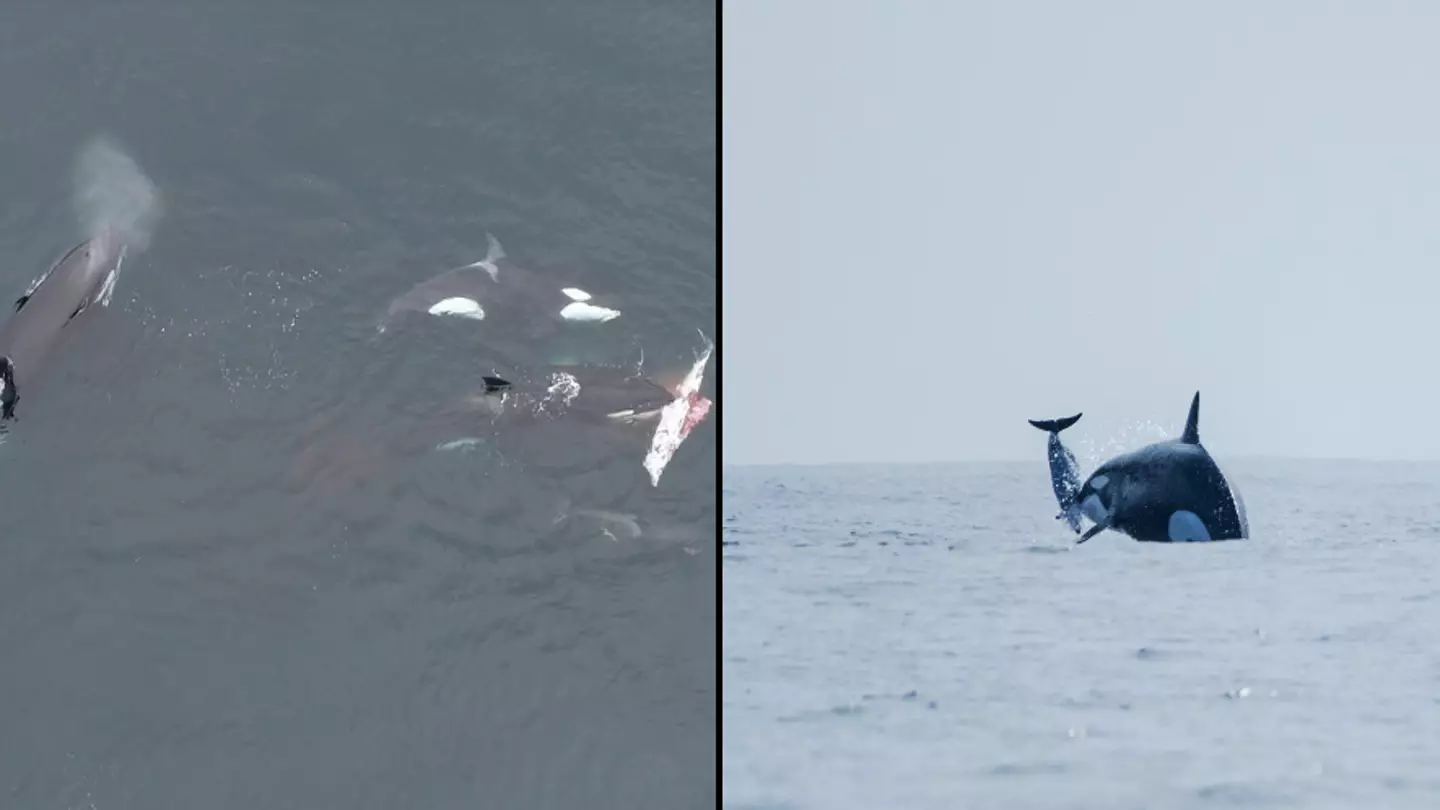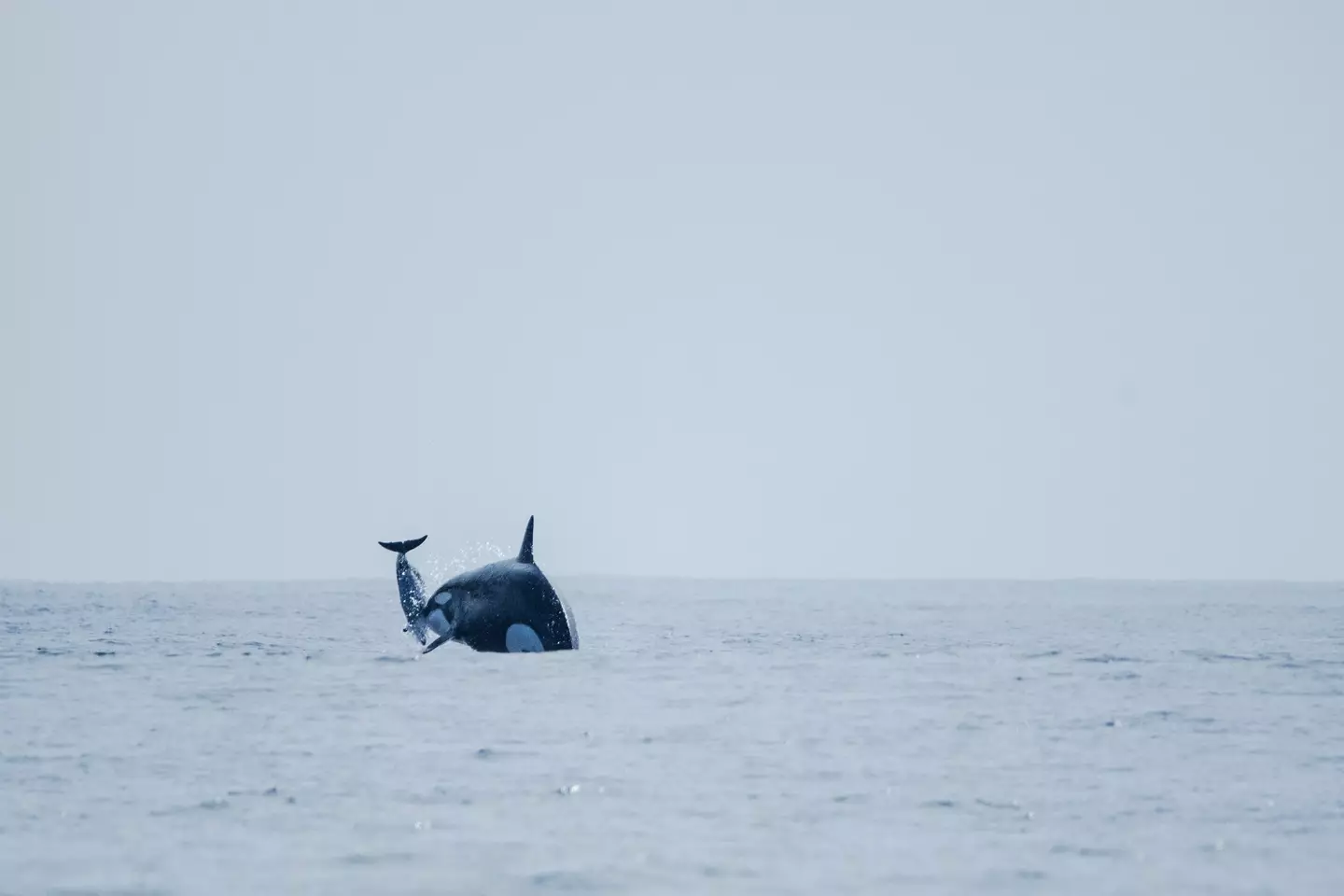
Warning: This article contains content which some readers may find distressing.
The terrifying reality of the sea has been captured in new footage as killer whales hunt down dolphins.
Dramatic new images of orcas in the Humboldt Current system, off the coast of Chile, come after years of surveillance by a team of scientists.
Advert
Researchers have been looking at the little-known population of the whales living there as they were captured preying on, attacking and eating dusky dolphins.
Led by Dr Ana García Cegarra, of the Universidad de Antofagasta, Chile, the team had previously observed the orcas using fishing boats to help them capture sea lions.
But now they seem to be sharing the food from the dolphins among the pod.

Dr García Cegarra says this new evidence of their eating habits might be able to help experts understand how populations of orcas in the southern hemisphere are linked, promoting conservation efforts.
Advert
“Studying orcas in their natural environment is very challenging as they are marine top predators, travelling long distances and living offshore, which makes observation difficult,” she said.
“But understanding their role in the marine environment is crucial for the conservation of this poorly-known species in the Humboldt Current.”
Killer whales have a varied diet but not all orcas eat the same thing. And the researcher explained orca populations can be assigned to different ecotypes based on their preferred foods, acoustics, and genetics. So getting an understanding of what the Humboldt Current killer whales eat is a ‘major step’ towards understanding where they fit in.
Having mapped the orca presence in the area, they were able to capture these incredible images of the orca pod’s matriarch, Dakota, throwing a dusky dolphin into the air.
The team reckon the sightings could indicate the Humboldt Current orcas may belong to the mammal-hunting Type A ecotype.
Advert
Their prey and small pod sizes, would be consistent with this, although their white eye patches are smaller than is typical of Type A orcas. Plus, they’ve never been recorded in Patagonia with other Type A orcas.
Dr García Cegarra said: “We wish we could obtain skin biopsy samples to analyse their genetic data, as there is no genetic information for orcas in this region of the south-east Pacific.
“However, they are very elusive and intelligent, which makes it difficult to approach them in the boat for biopsies.”

The observations of the dolphin hunting also revealed the pod were sharing their food - recorded often among many populations of orcas, sometimes to help feed kin, and sometimes because the pod hunts cooperatively and everyone gets a share.
Advert
Dr García Cegarra emphasised that more information and systematic study is necessary to fully understand and protect the Humboldt Current orcas.
She said: “The fact that we have observed new-born calves is important, because it indicates that they are having offspring, but we don’t know their survival rate.”
Dr García Cegarra added: “Thanks to citizen science, we can follow the presence of killer whales along thousands of kilometres of the coast of northern Chile - but most orca sightings are opportunistic.”